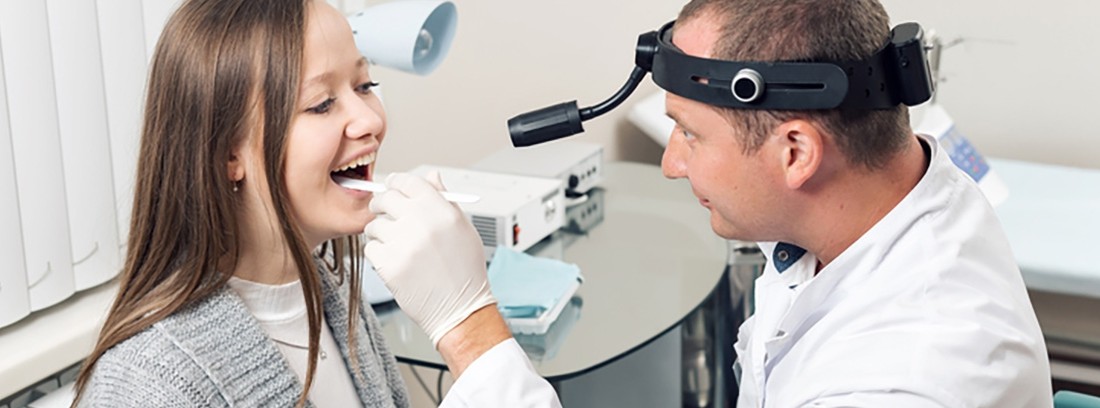Stroboscopy

Alternative names
Laryngostroboscopy
Definition
Diagnostic instrument used in the field of speech therapy consisting of an optical system (rigid or flexible endoscopy) and a fractional or burst light source (stroboscope). It allows the study of the vibration of the vocal cords, which is essential for the emission of the voice.
Unlike other methods of studying the mobility of the vocal cords, stroboscopy allows the visualization of the surface of the mucosa that covers the vocal cords and detects small alterations in its vibration not visible by other means.
How is the study done?
The stroboscopy is performed by the specialist in Speech therapy in Otorhinolaryngology and is usually performed in his office or in adapted rooms.
In flexible endoscope stroboscopy, the patient sits comfortably in a chair, with the head directed forward and the stifle slightly downward. The patient is asked to breathe normally through the mouth while the examiner slowly inserts the endoscope (shaped like a rubber or wire) through one nostril; then you are asked to begin to breathe through your nose until the scope is positioned in the larynx. Once the placement is finished, you will be asked to perform different actions such as whistling, speaking or knife, to study the different functions of the larynx and vocal cords. The study does not require the use of sedatives or anesthetics.
In stroboscopy with a rigid endoscope, the patient remains seated on a chair, the position of the head and chin will depend on the angle of the chosen endoscope. The endoscope is introduced through the mouth, and the examiner will often hold the patient's tongue with sterile gauze to aid in placement. It may require the use of an anesthetic prior to the introduction of the endoscope if the patient experiences nausea during the study.
Preparation for the study
No prior preparation is required by the patient.
What does it feel like during and after the study?
The study through the use of a stroboscope is painless although some patients may present laryngeal discomfort or nausea during the placement of the same.
Your doctor may administer a topical anesthetic (such as lidocaine spray) to minimize discomfort.
After the study, slight discomfort or nasolaryngeal irritation may appear that will disappear in the course of hours or with the taking of an anti-inflammatory.
Study risks
During the study may appear:
- allergy to the drug (anesthetic) used during the examination.
- Mild nasolaryngeal irritation
Study contraindications
The patient should consult with his doctor before carrying out the study in case of:
Taking or using blood thinners
What is the study done for?
The study by means of stroboscopy is a relatively simple and safe technique widely used in the field of speech therapy as it offers very useful information for the doctor. It allows the detection of very subtle alterations in the vibration of the mucosal surface of the vocal cords that are generally related to the presence of very initial lesions such as polyps, nodules, infectious lesions or small tumor lesions, most of which must be treated later by means of the use of specific treatments.
Laryngostroboscopy is an essential test in the study of the patient with dysphonia.
(Updated at Apr 14 / 2024)